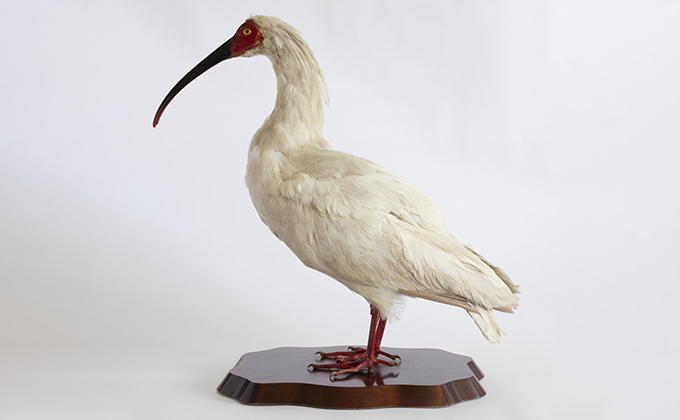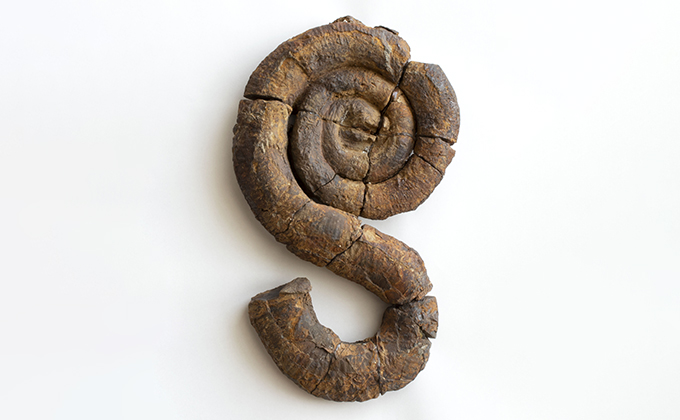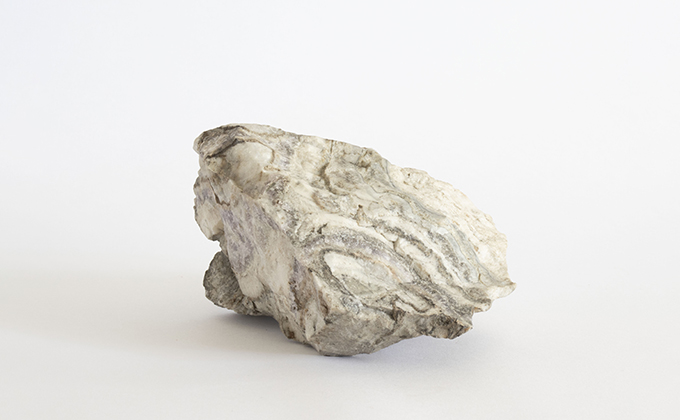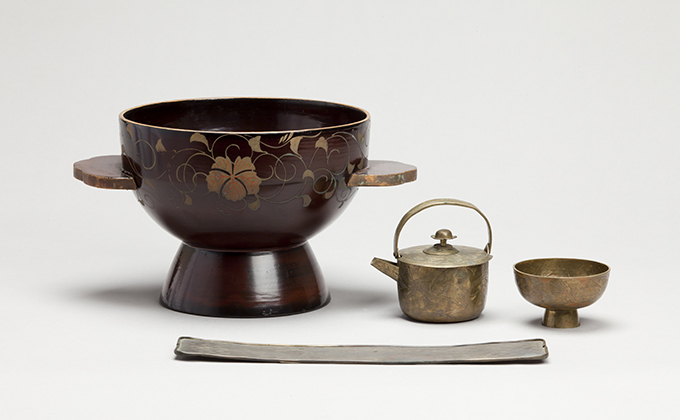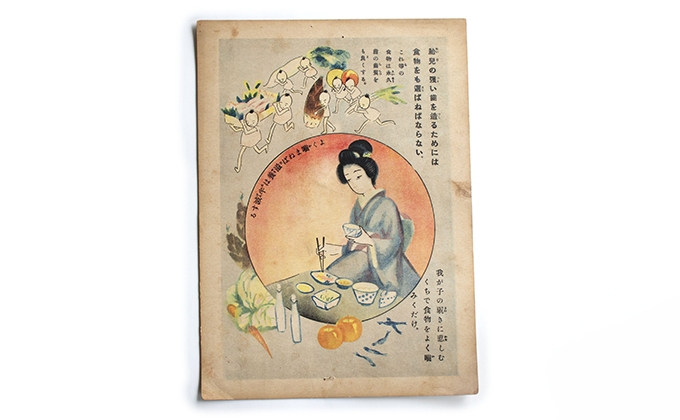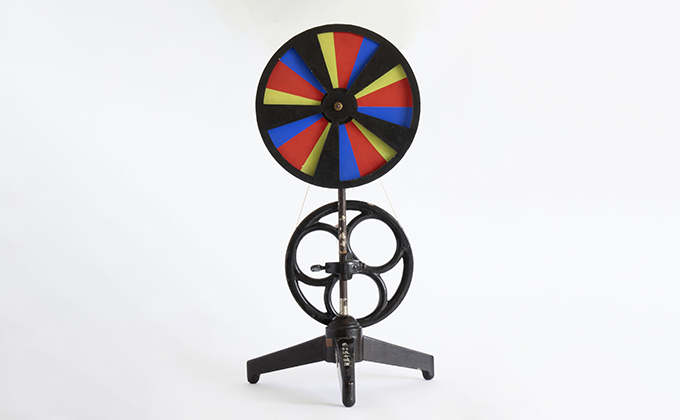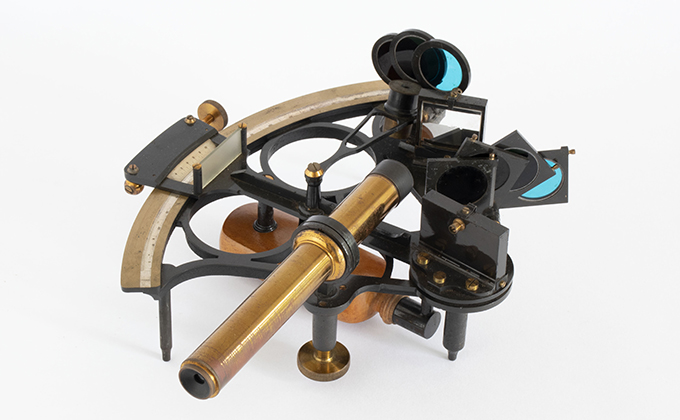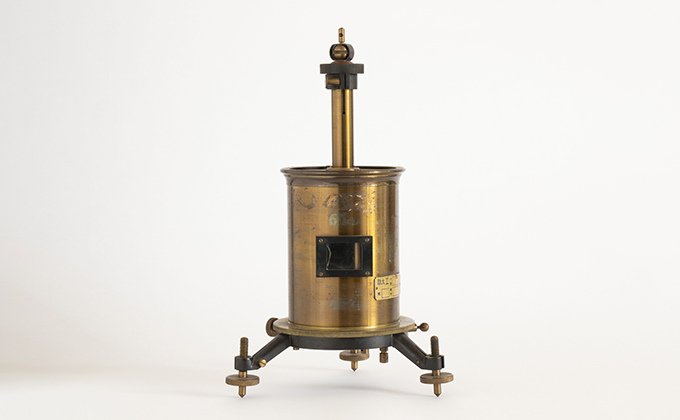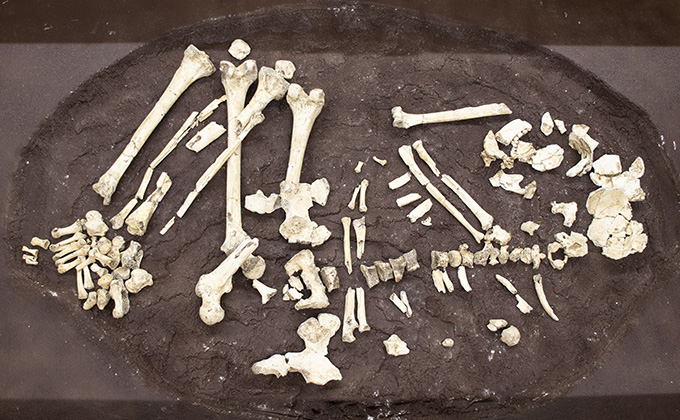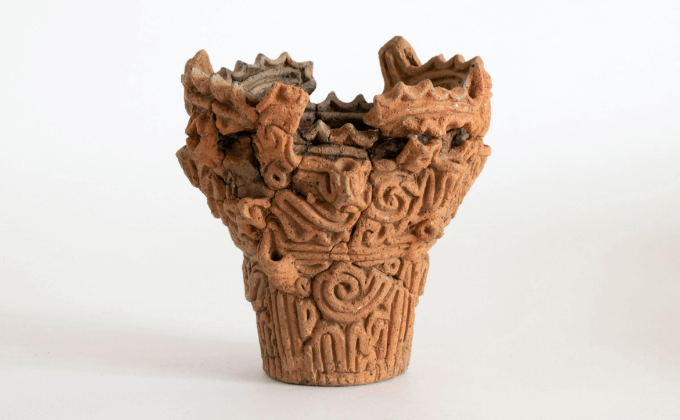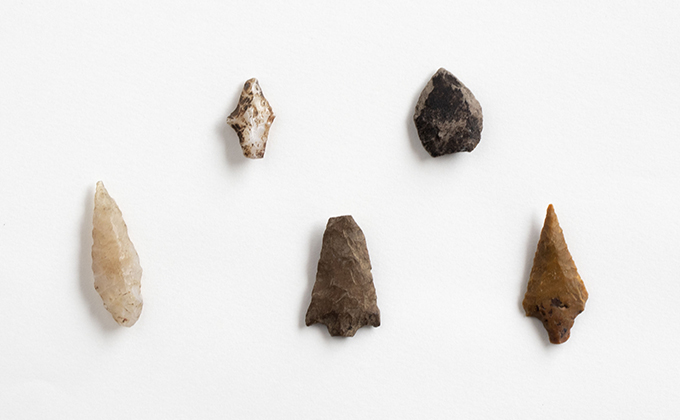Permanent Exhibitions
The permanent exhibition displays and exhibits valuable materials that provide an overview of the history of academic research at Niigata University.
Nature & History of Technology (at 1st floor)
In addition to experimental equipment used in former times under the old education system at the predecessor school of Niigata University, the museum exhibits materials that trace the history of dentistry and materials related to geoparks in the prefecture. It also introduces research results on natural disasters in Japan and other countries of the Research Institute for Natural Hazards and Disaster Recovery.
- Nipponia nippon
Faculty of Science “Geopark in Niigata Prefecture”
The word “geopark” means “earth park,” and a geopark is a place where you can feel the pulse of the earth and learn about the plants, animals, and ecosystems spread across it and their relationship with day-to-day human life. There are three geoparks in Niigata Prefecture: Itoigawa, Sado, and Naeba-Sanroku. The characteristics of each geopark are explained using fossil and rock exhibits.
- Pravitoceras sigmoidale Yabe
- Gold Ore
Research Institute for Natural Hazards and Disaster Recovery “Disaster in Niigata Prefecture”
Niigata University engages in locally focused research on natural disasters with the Research Institute for Natural Hazards and Disaster Recovery as a core base for research. The museum presents an exhibit showing the relationship between the ground and the damage that occurs in earthquakes that have occurred in the prefecture.
Faculty of Dentsitry “History of Dentistry”
Materials related to dental treatment and oral hygiene from the Edo to the early Showa periods are showcased.
The dentures have gum sections made from wood and are thought to have been made during the Edo and Meiji periods. They are valuable because they are elaborately crafted and use natural teeth for the front teeth. In addition, there are other materials that offer a glimpse into the dental care of those times, such as Ohagro (tooth-blackening) implements, black artificial teeth that were used by women who blackened their teeth, and diagrams concerning oral hygiene used for giving explanations to patients.
- Ohaguro kit
- Oral hygiene instruction
Faculty of Engineering / Faculty of Humanities (Psychology) “The Cornerstone of Modern Science and Technology”
This exhibit introduces the origins of science and technology education in a display of laboratory equipment that was actually used during the old school system. It includes many historical instruments, such as the X-ray tube made by Wilhelm Röntgen and the quadrant electrometer used by Marie Curie to study radioactivity. Also on display are memory apparatus (experimental psychology), as well as cams and other mechanical components.
- Kirchmann’s colour mixing apparatus
- Sextant
- Quadrant electrometer
Archaeology & Anthropology (at 2nd floor)
The museum also has on display the “Ogata Collection”, one of Japan’s most noteworthy collections of archaeological human remains gathered by the late Professor Tamotsu Ogata of the School of Medicine as well as archaeological specimens excavated from ancient ruins mainly in Niigata Prefecture to introduce human history from the Paleolithic Period to the present.
Faculty of Medicine / Faculty of Humanities (Archaeology) “The Ogata Collction”
The School of Medicine’s 1,800 human bone specimens collected by the late Professor OGATA Tamotsu is one of the most significant collections in Japan. Human bone specimens from the Jomon, Yayoi, Kofun, Medieval, Early Modern, and Modern eras are on display from this collection. Among them, the Human skeleton excavated from Sado Dou-no Shell Mounds are a designated cultural property of Niigata Prefecture. Thirteen stone arrowheads made of iron quartz and protein stone were excavated near the head of the human remains, and one ornament made from a tiger shark tooth was excavated near the chest, indicating the status of the buried person.
The museum also displays archaeological materials excavated from sites around Niigata Prefecture, and introduces the history of mankind from the Paleolithic period to the present day.
In the “Hands-on Corner,” visitors can touch shells from shell mounds, obsidian, wood products, smelting slag, and more. (currently closed).
- Human skeleton excavated from Sado Dou-no Shell Mound ( Designated Cultural Property of Niigata Prefecture)
- Flame style pottery excavated from Ishikura Site, Nagaoka City
- Stone arrowhead

